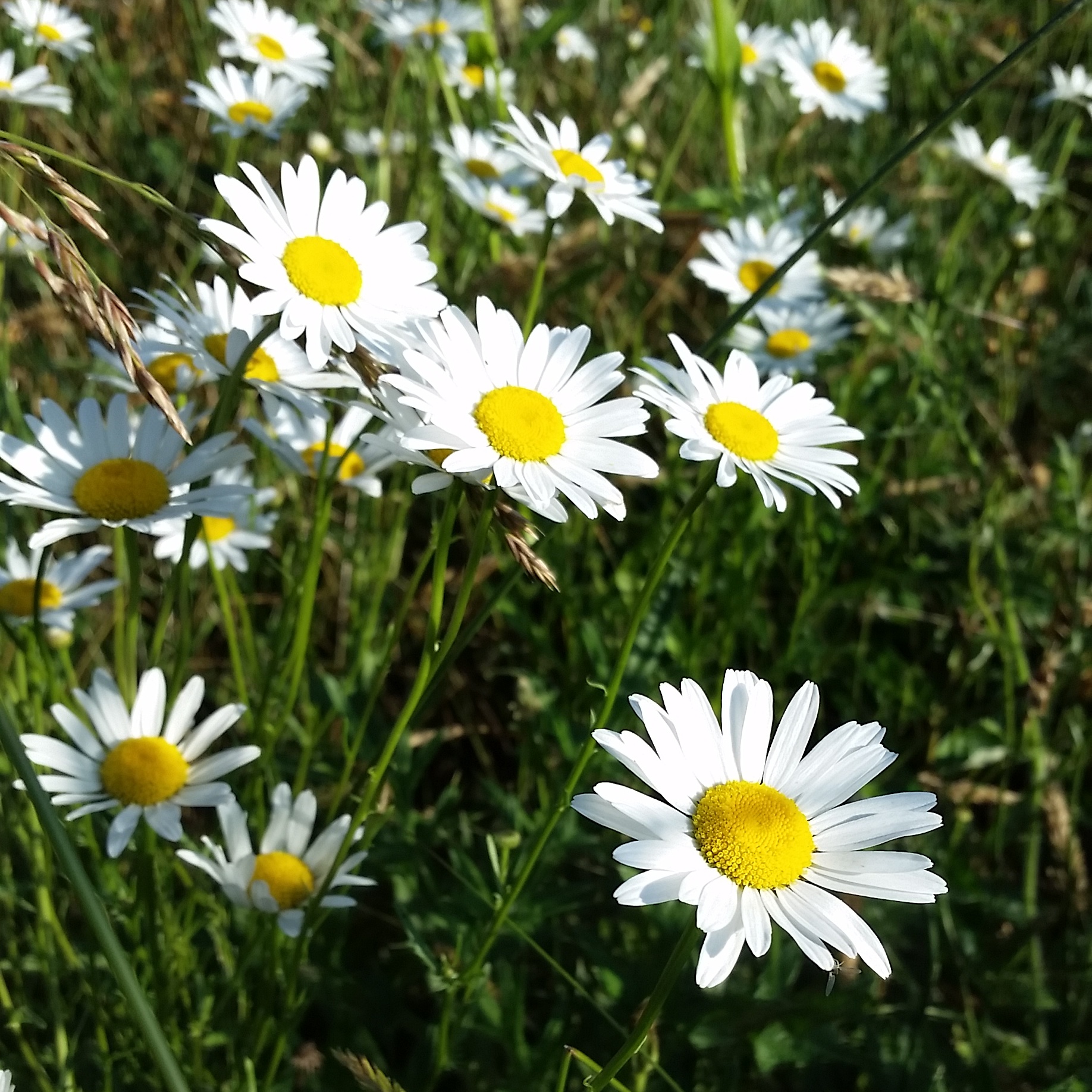The fact that these plants are valuable as wild edibles and medicinals are evidence that God doesn’t create anything without a purpose, and that everything that grows in the forests and fields has a use… because I absolutely despise them.
Read more#WildEdibleWednesday 7/25 - Maypop Passionflower
“Before all children everywhere became locked on iPad screens, kids in the country used to have fights with green maypops. They’re a uniform shape and easy to throw accurately, and they raise a good welt if you throw them hard. They make an awesome hand grenade if you’re nine years old and have an active imagination. (I may or may not be speaking from experience.)”
Read more#WildEdibleWednesday 7/18 - Fleabane
“And all those paintings, books, and movies depicting pretty medieval peasant girls with a sprig of the daisy-like flowers tucked behind their ear or woven into crown? They were trying to keep fleas out of their hair, which was a constant problem in the Middle Ages. Attractive, right?”
Read more#WildEdibleWednesday 7/11 - Golden Chanterelle
I was hiking through Shenandoah National Park in northern Virginia and happened upon a kindly old man and his wife picking mushrooms. I asked what he was harvesting and he replied, “Chanterelles. They’re the best mushrooms in the world. You want some?”
Read more#WildEdibleWednesday 7/4 - White Pine
“The true American answer to overbearing authority is defiance, not obedience. After all, they were willing to pick a fight with the British Crown over a tree.”
Read more#WildEdibleWednesday 6/27 - Blackberry
“Although they grow all over the world, blackberries are about as all-American as it gets. They’re a part of our culture, especially in the South. I have many fond memories of picking blackberries with friends and family, and then enjoying a cobbler fresh out of the oven with vanilla ice cream that evening.”
Read more#WildEdibleWednesday 6/20 - Bull Thistle
Most plants in the Aster family are beautiful, delicate, meadow flowers that are the kind of thing you’d pick for your lady friend or that an artist would paint a still life of. Not bull thistle. Oh, naw. It looks like it came straight out of Little Shop of Horrors, and if you don’t cut it down, it’ll break into song and try to eat Rick Moranis.
Read more#WildEdibleWednesday 6/13 - Dewberry
Some plants that we’ve covered in the past, while they’ll keep you alive and might even be highly nutritious, really just taste awful. But then there are those that are not only passable, but delicious.
Read more#WildEdibleWednesday 6/6 - Henbit Deadnettle
So named because chickens absolutely love it, it’s very closely related to Purple Deadnettle from a few months ago, and the two can be used interchangeably. Consider it a 2-for-1 deadnettle deal: If you can learn how to use one, you know how to use the other by default.
Read more#WildEdibleWednesday 5/30 - Oxeye Daisy
One of the most recognizable wildflowers in the world, daisies have also been used as a medicinal plant for thousands of years.
Read more#WildEdibleWednesday 5/23 - Red Clover
“As medicine advances and more and more compounds are synthesized from natural sources, maybe it’s time we humbled ourselves and realized that the ancients knew what they were talking about.”.
Read more#WildEdibleWednesday 5/16 - Wood Sorrel
“In an ironic twist of fate which we find highly entertaining, some of the fanciest restaurants in New York, L.A., Atlanta, and elsewhere serve wood sorrel as a garnish or a dish to complement meals that would be worth a few day’s pay for us.”
Read more#WildEdibleWednesday 5/9 - Lyre-Leaf Sage
Native Americans and early pioneers held to the belief that “like cured like.” So, since lyre-leaf sage spreads quickly and aggressively over the ground like a cancer, it naturally made sense to use it to treat the disease.
Read more#WildEdibleWednesday 5/2 - Ground Ivy
It’s the herpes of the plant world – once you’ve got it… you’ve got it. It’s nearly impossible to kill, and most conventional weed removal methods actually help it spread. But here at SARCRAFT, we have a solution: Eat it.
Read more#WildEdibleWednesday 4/25 - Common Vetch
Vetch and humans go way back. Way, way back, like 10,000-15,000 years. With a few exceptions such as cereal grains, vetch is arguably the oldest plant cultivated by humans.
Read more#WildEdibleWednesday 4/18 - Red Maple
"It’s the kid on the team that isn’t great at anything, but is reliable and always around when you need him… since red maple is everywhere, it’s a tree you can rely on that will work decently well for a wide variety of uses."
Read more#WildEdibleWednesday 4/11 - Indian Strawberry
Spoiler alert: It's not really a strawberry.
Read more#WildEdibleWednesday 4/4 - Purple Dead Nettle
Although it sounds like an alt-metalcore band name (at least to me), purple dead nettle is another common “lawn weed” that you’ve probably walked by every day without knowing what it was.
Read more#WildEdibleWednesday 3/28 - Wild Mustard
During the oppressive, impoverished years of Reconstruction in the South, mustard greens made up a large part of the diet of most poor farmers in rural areas, like my ancestors in the west end of Pickens County.
Read more#WildEdibleWednesday 3/21 - Common Blue Violet
Violets have a long association with the coming of spring in various cultures throughout the world, which is not surprising as they’re one of the first flowers to brave the cold and bloom out in late winter.
Read more



















